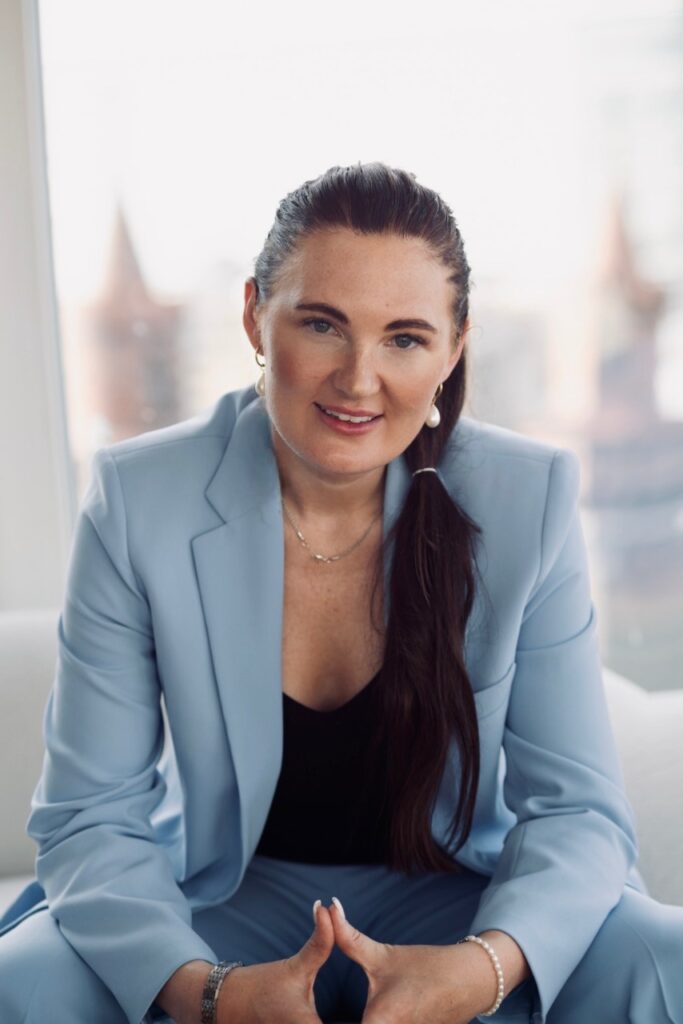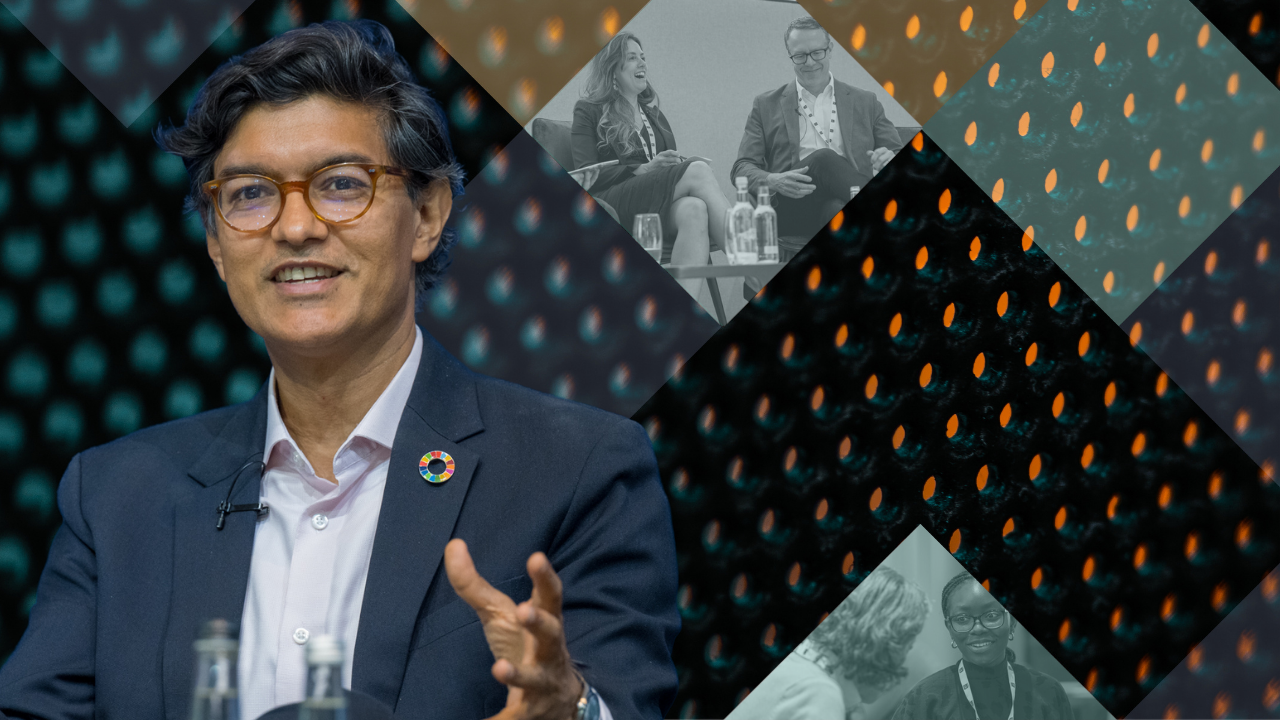IROs say that retail investors are increasingly using alternative channels to find their companies
Finfluencers weren’t part of Eugeniu Baltag’s original IR plan. But he says markets have changed – and digitalization has changed IR. Especially for companies with a strong retail following like Purcari, the multi-award-winning Moldovan winery, where he serves as investor relations director. ‘We are living in a very dynamic world, and digitalization is part of our daily life,’ he states. ‘Right now, the entire IR communication is shifting.’
Traditional forms of IR engagement remain of course – broker-organized events, meetings with institutions – but Baltag says ‘a large cohort of retail investors do not follow the classical route – they are looking to influencers for other ways of getting information.’ For Baltag and Purcari, communication with influencers is something that ‘evolved naturally,’ he continues, whether that is with industry insiders who have launched their own podcasts, influencers with large social-media followings or those that have even developed their own apps and platforms to speak to retail followers.
What started as Purcari teaching people about wine, evolved to bring in financial influencers too. ‘We joined forces,’ says Baltag, ‘promoting responsible wine education through financial channels’.
The pandemic served to accelerate collaborations like this, he continues. ‘Until 2020, [retail engagement] was more face-to-face or through conferences’. Since then, he says retail engagements have gradually moved to online platforms. Baltag also notes that the company does not seek out these finfluencers: either collaborations develop organically or the influencers approach Purcari themselves.

This increase – and the general proliferation of finfluencers across all social media – has meant that Baltag and Purcari take care to ensure the people they work with align to the IR message they want to put out. ‘We are not going for hype. We are working with reliable influencers who have a strong background in finance, in capital markets. They are teaching and sharing their opinion regarding how the capital markets work.
‘Of course, we get plenty of offers to partner with guys who are promising that you can get rich overnight but we do not work with these people. That is our main criteria when we think about who we will work with.’
Once a partnership has been established, what exactly does that look like? Baltag stresses the independence of the finfluencers the company works with. These are not paid partnerships and whether an influencer is also an investor or not – or is and decides to sell – is all irrelevant. They are also free to choose if or how they talk about the company: some might do a Facebook Live post from a Purcari investor event, others might post about the company to their LinkedIn community. Some of the finfluencers Baltag works with might have 100,000 followers, others might have 30,000 but all are independent.
‘We do not try to control information,’ he says. ‘We are not transforming IR into PR. We believe in the fundamentals of our company and in our growth. But every investor should do his or her own homework and decide whether to invest or not.’
Given the relatively hands-off approach Baltag takes with finfluencers, how does he measure whether or not these collaborations are working for the company or not? He looks at the share register, where he notes a large shift towards greater retail ownership – though of course multiple factors have contributed to this change. ‘When we listed in 2018 we had 95 percent institutional investors and only 5 percent retail,’ he explains. ‘In the five years since, we’re up to 20 percent retail investors – around 11,000 or so.’
The new reality
Veronika Kuznetsova, former director of IR at MMK, which was London and Moscow-listed when she was collaborating with finfluencers at the firm, talks about some of the numbers these collaborations delivered including more than 42,000 views on an ‘MMK breakdown and live broadcast with a stock market’ blogger with 174,000 followers on YouTube.
This, she explains, was a more hands-on approach than that taken by Baltag, and essentially involved the blogger ‘dissecting the company’s investment case,’ through a video based on materials provided by MMK. ‘Then he sent it to us, we edited it/provided comments, then he published it on his YouTube channel.’
The more involved approach Kuznetsova took with finfluencers is perhaps indicative of the fact that what began rather informally, with influencers reaching out to the company, quickly evolved into a planned, on-calendar activity within MMK’s retail investor IR program. ‘We created a monthly plan and targeted the particular finfluencers on Instagram, YouTube, you name it,’ she says, stressing that all went through a vetting process – or what she terms a ‘sanity check’.

First contact would always be followed by a meeting to get to know one another and discuss what could be of interest for their audience, adds Kuznetsova. ‘After the initial meeting it is quite clear whether you and the finfluencer are aligned or not.’
Even though the company was actively pursuing collaborations – and worked with finfluencers on their content – Kuznetsova also points out that any influencer’s stock ownership or otherwise was irrelevant to the relationship. When asked whether influencers were also shareholders, she says: ‘Frankly speaking, I don’t know, as I didn’t ask this question. I think it is better not to ask it, in order to avoid any conflict of interest. [The finfluencer’s] primary goal is just to be an additional layer of connection between retail investors and corporates, which is focused on providing more information transparency.’
Kuznetsova says MMK’s finfluencer program was a resounding success. Initially started as a way to increase liquidity, she says this was achieved ‘in the absence of any other market driven events.’
‘Stock liquidity was the major reason why we decided to create an IR program for retail investors in 2020,’ she explains. ‘The free-float structure was evenly divided between institutional investors, retail investors and index funds. Liquidity was low and all our attempts to increase the investment attractiveness among institutional investors, even though quite successful, led to only one theme of feedback from them: Your investment case is great, but we need at least $X mn in daily liquidity so that we can step in. The options we had at hand were to either convince the core shareholder to sell some of his shares and increase the free float, and ultimately liquidity, or to come up with our own solution to the liquidity problem.’
The issue of liquidity – specifically volatility – is one she thinks puts some companies off taking a more active approach to retail engagement. But, like Baltag, she points out that IR is changing and digitalizing – and retail is simply part of the ‘new reality where retail investors play a crucial role in the stock market’.
A question of control
As great as all this might sound, whether or not finfluencers are a fit for your company depends on many things: from your sector to your goals, from your market cap to your jurisdiction. And the issue can bring up strong opinions.
‘I am 100 percent against the use of finfluencers for small-cap companies due to the regulatory risks involved,’ states Bill Kaitz, president of Promethean Marketing, a US-based firm specializing in public-company marketing. ‘Numerous attorneys have written on this, emphasizing the challenges in this area. Given the popularity of finfluencers, both the SEC and the Financial Industry Regulatory Authority pay very close attention to this practice and there are very clear rules around issuers paying for exposure or promotion. Disclosure must include both monetary and non-monetary compensation and it needs to be clear and upfront.’
His view is both that, by disclosing this compensation, companies dilute the value of the finfluencer’s post – and that there are more cost-effective ways to do outreach that do not force you to cede control. ‘For small caps, even if they have a general counsel, it can be very costly to ensure that the finfluencer is adhering to compliance laws and regulations, or to deal with an SEC subpoena or investigation of any kind because the finfluencer is not compliant with the rules.
‘When I look at the goal of hiring an influencer – which is exposure to a retail audience – I think there are several other methods that are less expensive,’ he adds, talking about media relations, traditional PR and IR among others. ‘Any of these will allow for control and oversight.’
Even outside of regulatory concerns, using influencers is of course not all plain sailing. Kuznetsova talks about the time-commitment involved in looking after the relationships you have as well as monitoring and managing posts from influencers you don’t actually work with: ‘You cannot check every post and video,’ she stresses. ‘But what you can do is to actively engage with finfluencers and help them to produce quality content.’ But you might also encounter some that produce the content without reaching out to IR teams, she adds.
‘Together with the PR team we routinely monitored the information published online where MMK was mentioned and, if we spotted that it is not correct or that it was misleading, we approached the finfluencers and bloggers to discuss the case directly,’ Kuznetsova continues. ‘Proactive work is the only solution’
For Kaitz, the risks are simply too big. ‘There have been multiple SEC litigation cases involving improper use of X (formerly Twitter) by influencers, particularly for failing to disclose compensation,’ he says. ‘The influencer might tweet about a stock without mentioning they were paid to promote it. But the SEC has also made it clear that a simple link to a disclaimer isn’t enough; the disclosure must be included directly in the tweet.
‘This is one of the scariest aspects – there are strict rules around disclosure and violations can lead to serious consequences.’ He also stresses that this goes well beyond any fee for influencer services.
‘Even if an influencer isn’t paid directly, any compensation, like a meal, must still be disclosed. And beyond compensation, any information that could affect an investor’s decision must also be disclosed, including if the influencer is a major shareholder or plans to sell the stock.’
Executives as the creators
Katie Perry, co-host of the After Earnings podcast and head of marketing at Stakeholder Labs, is seeing something akin to bringing creative control back in house.
‘For public companies, it’s almost as if the executives are becoming the creators, versus using a creator to tell the message,’ she tells IR Magazine. ‘It’s very direct to the investor.’
She points to examples like Spotify, where the streaming firm’s summer earnings saw founder and CEO Daniel Ek walking down the beach doing an Instagram video saying, Hey, we just hopped off earnings, here’s what we went over. Robin Hood has produced studio clips of CEO Vlad Tannev going over the takeaways. Perry talks about having Harley Finkelstein, Shopify’s president, on her podcast: ‘He’s such an amazing talent that if he wasn’t the president of Shopify, he would have a podcast,’ she says. ‘I don’t want to say they’re becoming finfluencers, but executives are becoming creators to some degree.’
For Perry, this shift is less about regulation but it is still fundamentally about the same risks – and control – that Kaitz talks about. ‘I think it’s less about paying a creator to talk about your business, which is probably not good, versus using that person’s platform or interview style to reach the audience,’ she continues. ‘That’s a little bit of the nuance.’
All about authenticity
Julia Stötzel is a former head of IR at Delivery Hero and About You – two online giants – who now runs her own consultancy, where she keeps a virtual rolodex of finfluencers. ‘I maintain a database of influencers, tracking both those I’ve worked with and others who have collaborated with other companies before. While there are many influencers available, the key for companies is selecting the right ones and to not look at vanity metrics or fall into the trap of paying for opinions or compromising the authenticity of their story,’ she says.
She adds that companies considering finfluencers in order to better engage retail investors need to go beyond the surface metrics when looking for the right match. ‘When I start working with a company, we begin with a kickoff workshop to clarify their goals, whether they want to reach retail investors, increase media coverage or target institutional investors,’ explains Stötzel. ‘This helps determine which influencers to approach, as the follower demographics matter.
‘I focus on influencers with a proven track record, aligning with the company’s industry and objectives and then propose a shortlist for approval.’ She describes the process as ‘similar to press work,’ where she will leverage existing relationships or reach out through various platforms. ‘To secure their interest, I offer unique opportunities, like interviews with a CEO or senior executives, which enhance their credibility.’

Like Perry, Stötzel is a fan of podcasts – she hosts the Street Tweets podcast – and her comments on offering unique opportunities that bring executives into the influencer mix echo Perry’s own views on the C-suite as creators. The medium offers a ‘diverse reach,’ she says, as does YouTube. While Instagram is the more traditional retail finfluencer sphere, TikTok is increasing its appeal too and your choice of platform really has to be dictated by your target audience.
‘TikTok is great for younger audiences, but it’s evolving, with more people in their 30s and older using it for serious content like stock analysis. It’s no longer just for dancing and lip-syncing,’ says Stötzel. ‘Instagram is the go-to platform for retail finance advice, with a broad network of influencers. YouTube offers longer, in-depth content and tends to attract older, more professional audiences. Podcasts also cater to a more mature demographic, including key decision-makers in finance.’
More than anything though, Stötzel says authenticity – for both the influencer and any company representative – is key if you want to make an impact. If you have a relationship where you trust the influencer, you can ‘go off script’ somewhat and create something that reflects the influencer’s own style – and what their followers enjoy. If you do it right, ‘you can make really good, authentic content.’







